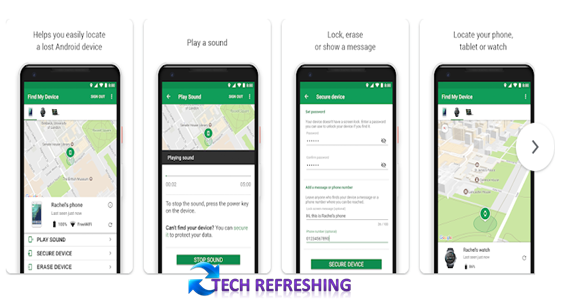Google announced during its I/O 2023 keynote that it is expanding and modernizing its Find My Device platform to include a wider range of devices and a vast network of Android devices to help locate lost gadgets.
Google is expanding and modernizing its Find My Device platform to include a wider range of devices and a vast network of Android devices to help locate lost gadgets. During Google’s I/O 2023 keynote, Sameer Samat, the Vice President of Product Management at Google, announced that the platform will soon include headphones, earbuds, tablets, and other product categories. With this expansion, the Find My Device platform will become a network of billions of Android devices around the world.
A Vast Network of Android Devices
One of the most significant updates to the Find My Device platform is the inclusion of a vast network of Android devices to help locate lost gadgets. This network is powered by billions of Android devices around the world, making it one of the largest networks of its kind. The idea behind this network is that if you lose your device, other Android users nearby can help locate it by pinging it and pinpointing its location.
Third-Party Devices Supported
The updated program will also allow third-party devices, such as Tile and Chipolo, to participate. This means that if you lose a Tile or Chipolo tracker, other Android users nearby can help locate it by pinging it and pinpointing its location. This integration with third-party devices makes the Find My Device platform even more useful, as it can now locate a wider range of gadgets.
Privacy-Preserving Design
Samat assured users that the device location data is encrypted and not viewable by the company. From the start, Google designed the network in a privacy-preserving way to protect users’ data. The Find My Device platform has always been focused on user privacy, and this expansion is no exception. Google is committed to ensuring that users’ data is protected and kept private.
Preventing Stalking
During the keynote, Sameer Samat also acknowledged the potential misuse of location-tracking products and discussed the measures being taken to address them. He explained that unknown tracker alerts will notify users when a tracking device, including Apple AirTags, is traveling with them. Samat emphasized the collaboration between Google and Apple to prevent stalking incidents that could arise from the use of these gadgets designed for convenience. This collaboration provides reassurance to users that their privacy and safety are being prioritized.
Expected Rollout
Users can anticipate the gradual release of these updates over the next few months, including the addition of support for many more devices. As a result of this expansion and collaboration, Google’s Find My Device platform is now more comparable to the location-tracking solutions offered by Apple and Tile. This update is particularly beneficial for Android users who heavily rely on the Find My Device platform to locate misplaced gadgets. All in all, the latest updates bring good news for Android users who can now benefit from the platform’s improved functionality and versatility.
Conclusion
In conclusion, Google’s expansion and modernization of its Find My Device platform is a significant development for Android users. The addition of a vast network of Android devices and the integration with third-party devices make the platform even more useful and versatile. With a privacy-preserving design and a focus on preventing stalking, Google is demonstrating its commitment to user privacy and safety.
As these updates roll out in the coming months, Android users can expect to see many additional devices supported, bringing the Find My Device platform closer in line with location-tracking solutions from Apple and Tile. Overall, this expansion is great news for Android users who rely on the Find My Device platform to locate their lost gadgets.


